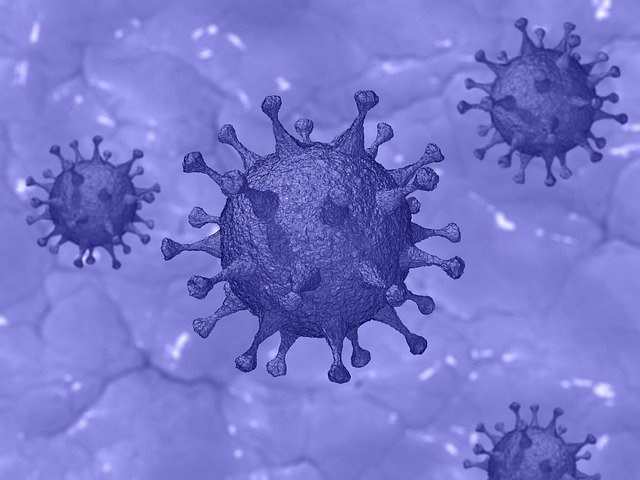There hasn’t been a lot of positive news about COVID-19 lately, but there was some good news reported at the latest Saskatchewan Health Authority update on Thursday.
Chief medical health officer Dr. Saqib Shahab was reporting that they were seeing a plateauing of COVID-19 cases in the seven-day average. That was now at 230.
Dr. Shahab noted the new measures had a “calming effect that all of us are now observing.”
He also noted the case rate per 100,000 was now at 19, and the test-positive rate at 7.8.
“We aren’t out of the woods yet, but things are looking positive,” said Dr. Shahab.
The province had other good news as well: they were reducing the isolation period for positive individuals from 14 to 10 days.
The change was being made, said Dr. Shahab, based on emerging evidence that showed most people were not infectious ten days after testing positive. And it allows people who tested positive to return to their daily activities when healthy. This only applies to COVID-19 positive cases; close contacts still must isolate for 14 days.
The province also had some vaccine news, on the heels of the first shots being administered in the pilot program on Tuesday. By the end of the day Wednesday the SHA had vaccinated almost 250 health care workers and on Thursday they were targeting 300 more.
SHA chief executive Scott Livingstone said the Regina pilot is being expanded in the coming days to include key front line staff in cancer care and emergency medical services personnel, as well as key staff involved in aerosol generating procedures.
Livingstone also confirmed that the next phase of the province’s Vaccine Delivery is to begin in Saskatoon next week. Another shipment of the Pfizer vaccine is expected to arrive in Saskatoon as early as Dec. 21.
The first step of Phase 1 of the province’s Vaccine Delivery Plan begins next week as 1,950 health care workers in Saskatoon ICUs, Emergency Departments, Covid Units, and testing and assessment centres where they will receive their initial dose of the vaccine. This will occur at a central location at Merlis Belcher Place at the University of Saskatchewan.
The SHA expects Health Canada approval of the Moderna vaccine with shipments later in December. It was noted the Moderna vaccine can be stored in regular temperature freezers, which will make it much easier to transport to and use in smaller, rural centres in the province.
As they do that, Livingstone said the priority will continue to be on the most vulnerable and health care workers.
Widespread vaccine access to begin immunizations of the general population as part of Phase 2 is tentatively beginning in April 2021. Livingstone emphasized the need for people to continue to follow public health orders and also noted that the system is still “severely strained”.
“We still require extraordinary efforts to keep the system from being overwhelmed,” said Livingstone.
Dr. Shahab echoed a familiar tone, as he offered condolences for the families of the seven individuals who had been reported to have died of COVID-19 according to the latest numbers.
“This is a reminder of why we must stay the course,” he said.
Derek Miller of the SHA provided a status update on their first phase of surge activation in the hospitals. One strategy he talked about was one where the SHA would assist with outbreaks in hospitals and care home settings by establishing a pool of skilled resources to be available as outbreaks occur.
Miller said that to date, the SHA has approximately 117 staff identified for redeployment for this purpose. This is in addition to the staff that have already been redeployed to outbreaks, including 70-plus staff redeployed to Extendicare Parkside in Regina.
In addition, the SHA states it is undertaking a number of measures to proactively respond. These include identifying sites of high risk and performing Infection Prevention and Control and safety inspections, as well as providing more IPAC and safety resources where there are outbreaks. They are also reviewing and identifying facilities that may have poor ventilation and look to mitigate risks there.
Looking forward to the future, Miller said they are looking at vaccine rollout to key sites with vulnerable residents and patients; and are expanding point of care testing to facilitate early detection.
The SHA states that since their Dec. 3 service slowdown announcement, staff assigned to the labour pool has increased by 377 for surge response, or 64 percent of the target of 588 they have identified.
About 900 services have been contemplated by the SHA for slowdown, but so far the SHA has approved slowdowns for approximately 200. Many services continue as normal, but there are reductions in major centres including temporary, localized disruption to all elective surgeries in North Battleford and Prince Albert, and temporary localized 35 percent reduction in surgical volumes in Saskatoon and Regina except for third party surgical providers in these cities.
The SHA states that In all of these sites, urgent or emergent and cancer surgeries are prioritized and will go on. Outside those locations, elective surgeries and endoscopy procedures continue at relatively normal volumes.



